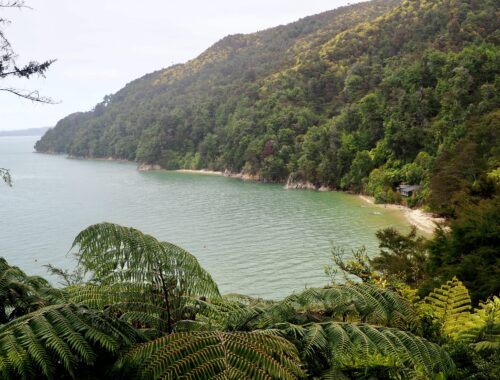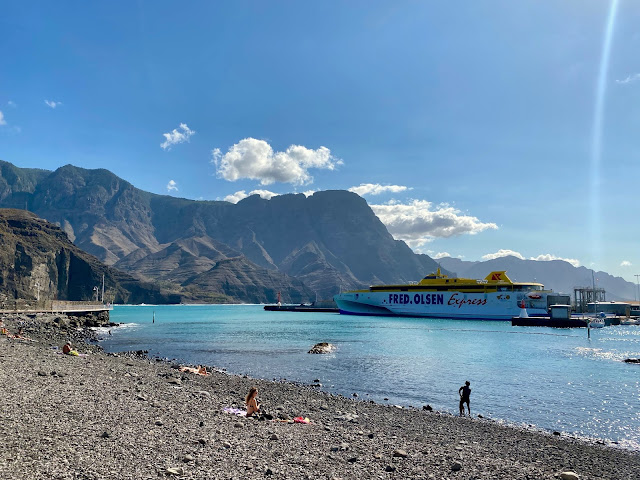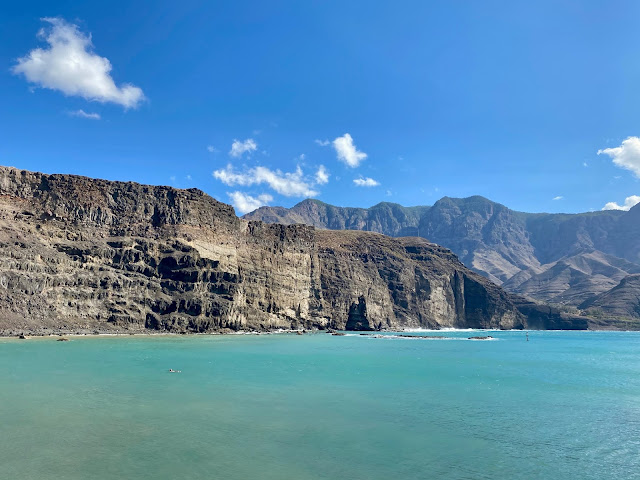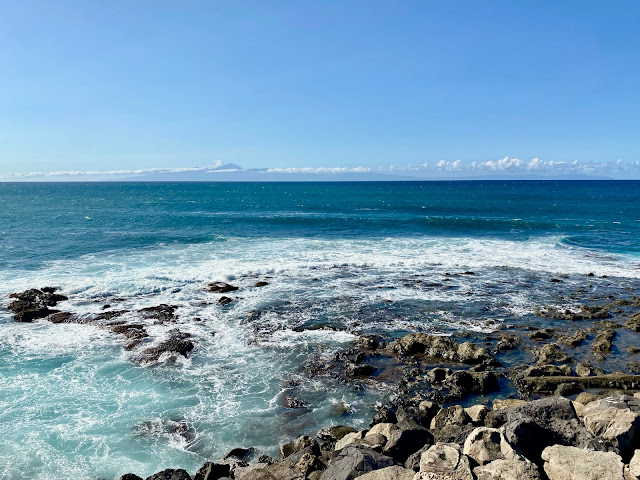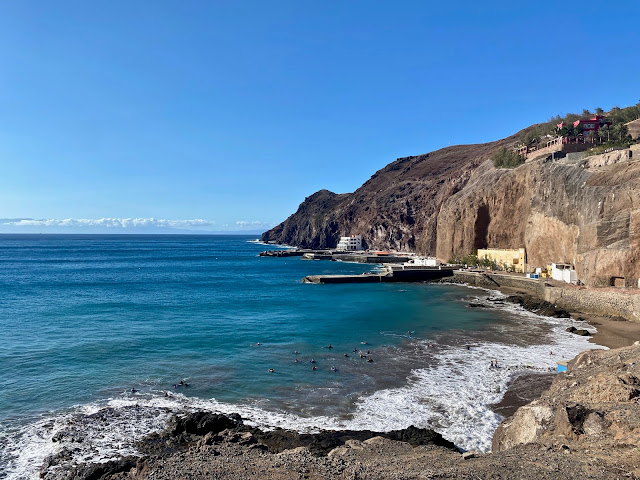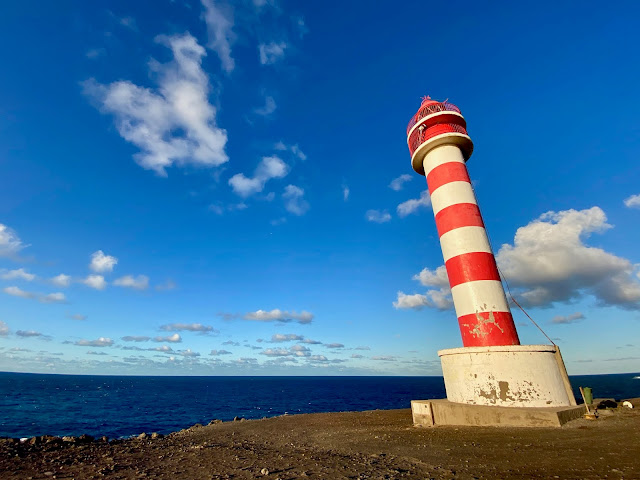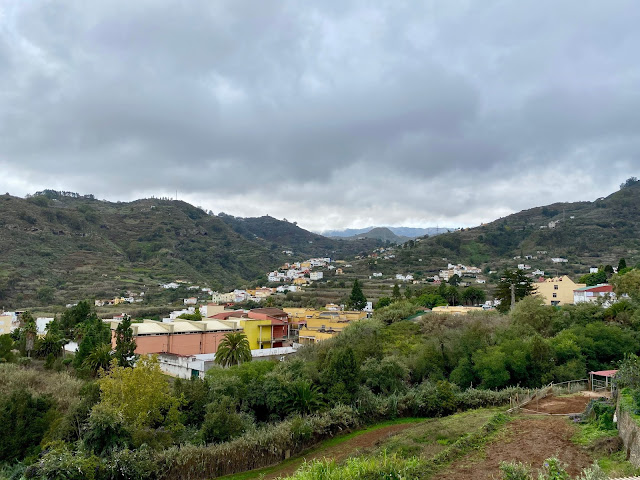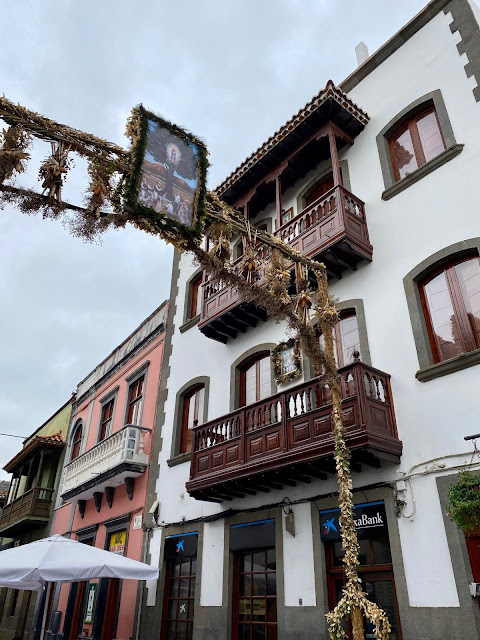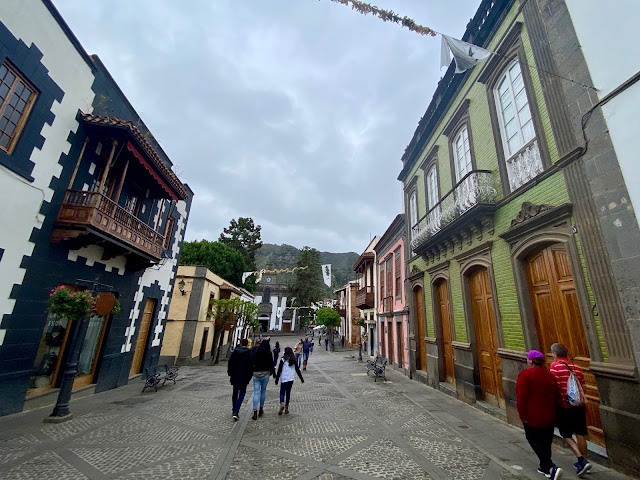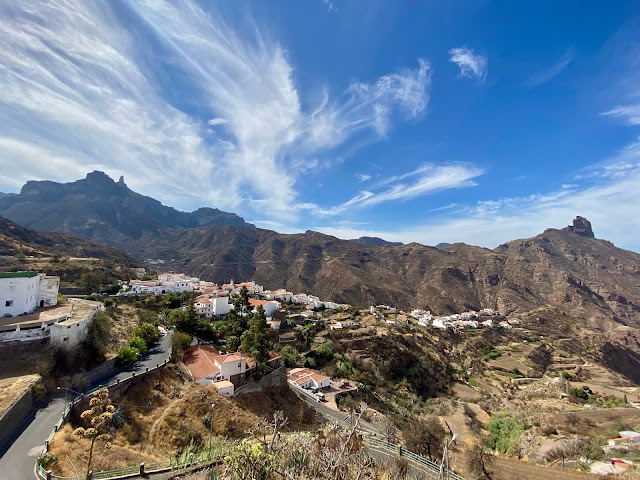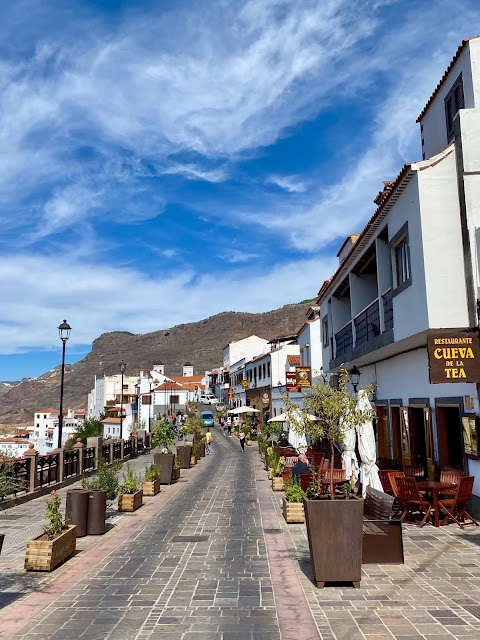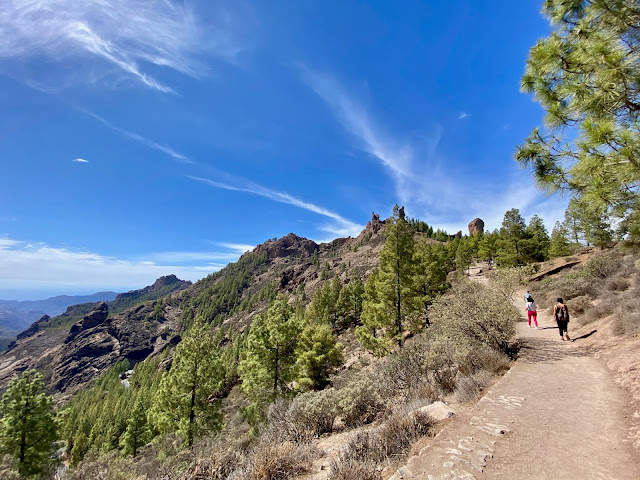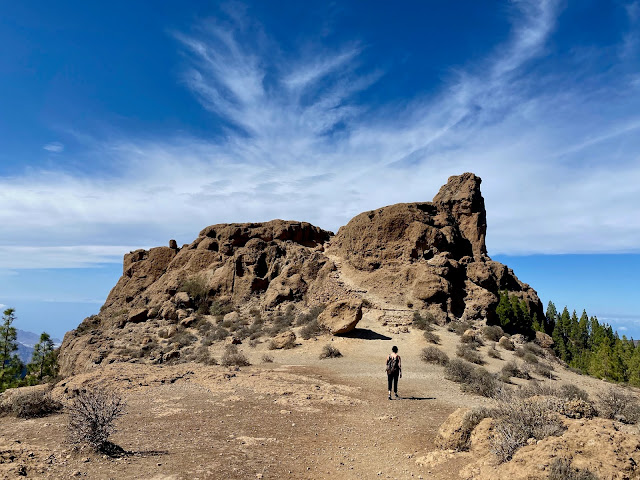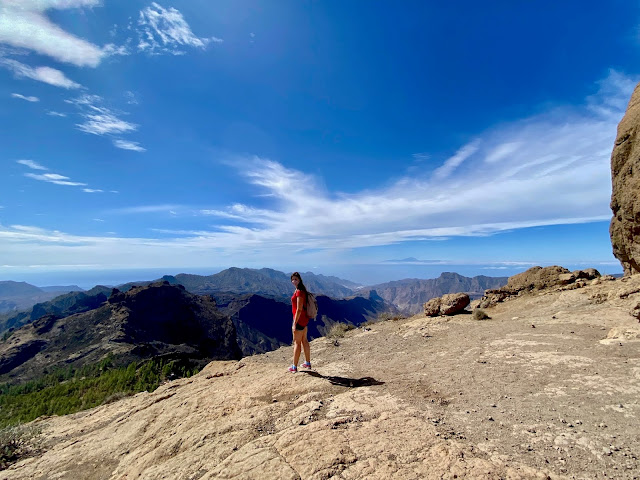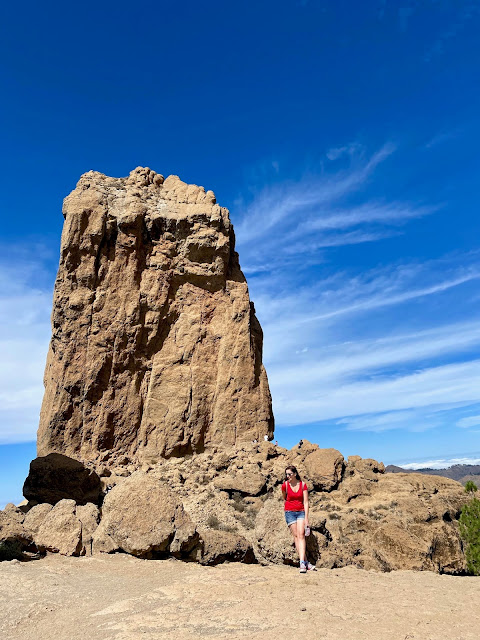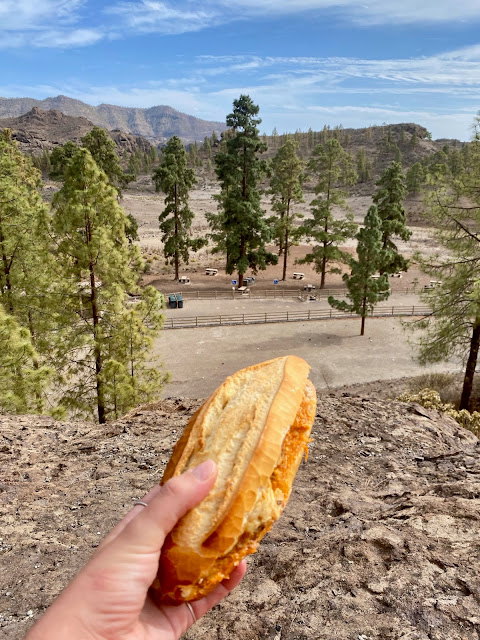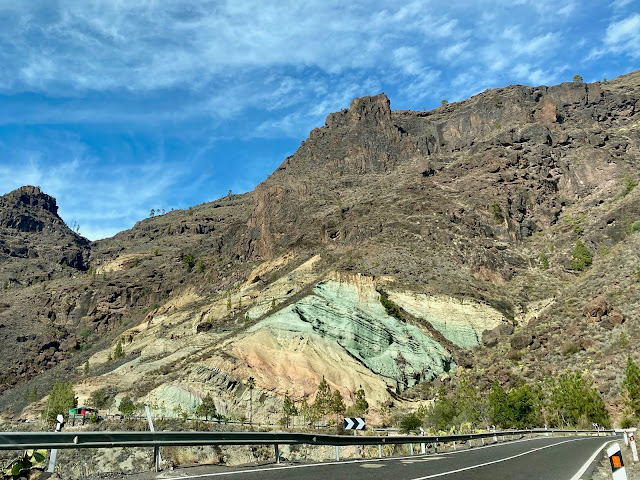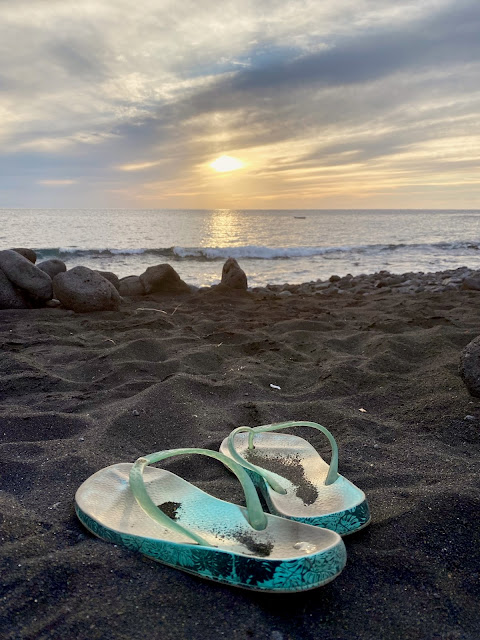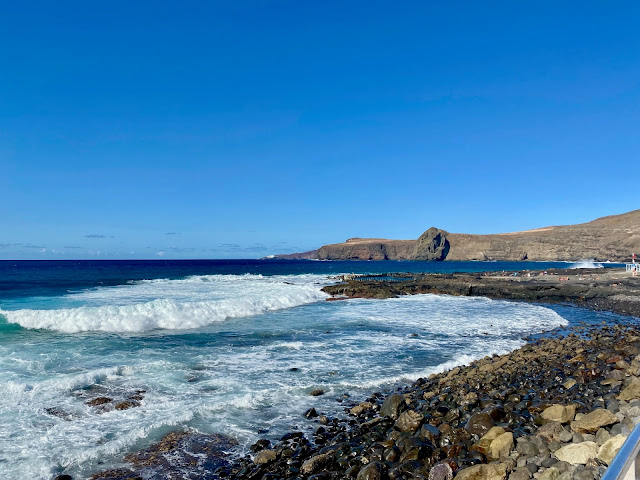
Gran Canaria | Spain
First things first, if you haven’t seen the first part of my time in Gran Canaria, in Las Palmas, and the explanation behind my trip, then you can check it out here. I was on the island for five days, so the last three were spent exploring the island beyond Las Palmas. We rented a car for the weekend, which was surprisingly cheap! So on the morning of my third day, I took it easy while my friend was at work. Then we caught a bus to the airport as soon as she was done, to pick up the car from there.
Day One
Agaete
Our destination for that first afternoon was Agaete, a small fishing town in the north west of the island. The drive there was pretty easy-going, following a motorway around the north coast. It did give me my first glimpse of the mountains that fill the centre of Gran Canaria, rising steeply to our left, and cliffs dropping away to the sea on our right. As we approached the west coast, I spotted a particularly large hill off in the distance. I was confused, as it seemed too far away to still be on Gran Canaria. As we drew closer, we concluded that our other guess was correct. We were in fact looking at the neighbouring island of Tenerife on the horizon. The mountain was the vast Mount Teide, an active volcano and the highest point in all of Spain!
We arrived in Agaete around mid-afternoon, and drove around in circles for a while searching for a parking spot. We eventually found one and set off to explore the town on foot, with a helpful lunch restaurant recommendation from the guy monitoring the car park we ended up in. The town is actually made up of Agaete proper and the port area. We were in the latter, a small collection of white painted houses with blue finishings. It almost felt like we’d landed in Sardinia or some other Greek island instead! It’s all kept beautifully clean and everything matches perfectly, so the whole place was very picturesque, like something out of a postcard.
We walked down to the port, where the ferry to Tenerife was docked, and found the restaurant suggested to us. Amongst our lunch dishes, we had papas arrogadas, which are “wrinkled” boiled potatoes served with a red chilli sauce, and gofio, which is a toasted grain flour used to make a thick sort of soup. These are both very typical Canarian dishes. I have to say, I preferred the papas to the gofio, which I could only eat so much of as it’s very filling!
We wandered along the seafront, where there’s a small beach, and along the cliffs there used to be a rock formation known as ‘The Finger of God’. Unfortunately, it broke in a storm years ago, so there isn’t much to see now. Then, we headed along the promenade, which gave us views of Tenerife and the huge waves crashing down. We were on our way to the natural rock formation swimming pools, just a few minutes along the coast. There’s a few of them all clustered together, and the water in them is still and deep and clear, unlike the wild waves beyond.
Sadly for us though, the waves were too wild that day, even though the water in the pools was still. They had raised the red flag, meaning no swimming. Sure enough, all the other people around the pools were just sitting in the sun, no one was in the water. Our original plan had been to spend a while here enjoying the pools. But since swimming was out of the question, we wandered around a little taking photos, before returning along the promenade to the car.
Sardina
We ended up driving further north up the coast to another town, Sardina (not to be confused with Sardinia of course), where we would find another beach. We had a somewhat mountainous drive along a narrow road to get there! The town itself was pretty uninteresting, but the beach was a small cove in amongst the cliffs and all black volcanic sand. It was surprisingly busy, as there seemed to be some sort of surfing lesson going on, with twenty or thirty of them out in the water!
There was some space to the side for swimmers though, and the flag was yellow here so we could go in this time. But the waves here were definitely much bigger and stronger than the completely still waters of the pools at Agaete! I didn’t stay in for long, as I was totally out of breath from the waves pretty quickly. We lounged around for an hour or so and picked up an ice cream in the town, then set off for one last stop for the day.
Not far from the town, we had seen a lighthouse marked in the northwest corner of the island, the Faro de Sardina. It took us longer than expected to get there, as we were almost there when we suddenly met a large blockade across the road, which hadn’t appeared on the car’s GPS at all! So we had to backtrack and take a different route around – both were narrow, winding, potholed roads – but we got there in the end.
The lighthouse itself was a tall, skinny red and white affair, pretty enough. There was literally nothing else around it bar the rocky clifftop though. It’s a popular spot for sunset, since it faces west, and we were there in the late afternoon, as the sun was starting to get low. We didn’t stay for the whole sunset, as the place started to fill up a bit, and we didn’t want to be driving back along those mountain roads in the dark. So we made our exit, and returned to Las Palmas for the night.
Day Two
Teror
We started early this morning, as we had a busy day ahead of us, venturing further south in the island for a weekend road trip. Today was definitely the most hair-raising in terms of the roads, as most of our journeys were high up in the mountains, twisting around the edges of them, with huge drops off to the side. I was very glad that I wasn’t the driver! I also got a glimpse of how dramatically the weather can change across the island. We drove up one side of a mountain in the fog and drizzle of the clouds, and then rounded a corner to the other side and brilliant sunlight instantly dazzled us! The latter was certainly our preference for enjoying the vast, sweeping views from high up in the mountains.
Even though the island isn’t that big, and none of the places we visited looked that far apart on a map, it takes a lot longer to get there when the road twists and turns so much, and you have to drive slowly and carefully. Well, apparently you do unless you’re on a motorbike, as a dozen of them came roaring past us at one point and scared the living daylights out of me!
Our first stop was the town of Teror, where I did have to put a jacket back on, since it was cold and rainy up in the mountains there. It’s a small town with a pedestrianised main street and pretty buildings lined with wooden balconies, with garlands strung between them. At the far end, there’s a church, and we were able to go in for a quick look around. In some ways it reminded me of churches we saw in Mexico, richly and ornately decorated, as is typical of Catholic churches. All quite different to the simpler Presbyterian ones I grew up with in Protestant Scotland!
There’s also a large pine tree next to the church, where the Virgin Mary once appeared, hence the name “Our Lady of the Pine’. We wandered around a bit and picked up some food for later. I bought some earrings made from cooled lava (which seemed appropriate on a volcanic island) before continuing on our journey.
Tejeda
Our second destination was Tejeda, and luckily we had reached the sunlight by this time! Tejeda is very popular with tourists, and it’s easy to see why. Built into the mountainside, with streets stacked up above each other, and entirely composed of brilliantly white buildings with wooden finishings. It’s truly picture-perfect and offers stunning vistas around the area. We walked around it, visiting a small park area and stopping outside the church (there was a service happening inside). Then we returned to the first street, which is lined with small shops and cafes.
The bakery, Dulceria Nublo, is particularly notable. We bought bread for later and a large palmera pastry coated in chocolate (they had lots of other flavours too!) to share, which was very sweet and very filling! As we sat in the sun eating it, we could see our next stop on the mountain above us, the Roque Nublo.
Roque Nublo
It took longer to get there than planned though, first with a nerve-racking half hour drive around the mountain (this was the point when the motorbikes passed us). Just as we were nearly there, we encountered a blocked road (yes, again!). It turned out there was a rally going on that day, and the road would be closed for a couple more hours. They advised us to drive all the way back past Tejeda and take another road around the other side of the mountain. This added about 40 minutes on to our total journey! Eventually we arrived, and parked the car at the edge of the road alongside dozens of others (drawbacks of going at the weekend), and found the entrance to the Roque Nublo trail.
The hike isn’t that long, only about 20-30 minutes. However, it was hard-going in the afternoon sun, climbing up over the rocky hillside, and having to wear a mask the whole time. It was worth it though, to emerge on the flat mountain top, and see the Roque stood tall in the centre of it. It’s a fairly unique sight, just this huge, lone rock, which you can climb all the way around. I’ve been nursing a minor foot injury recently though and didn’t want to risk making it worse again.
The mountain top also offered views all around the area, and we were able to see Tenerife on the horizon again. We took plenty of photos, which was the only time we removed the masks, making sure we were far enough away from other people. We also sat for a while to just admire the view, before heading back down the same way we came.
La Presa de las Niñas and Tasartico
Our plan had been to stop in the nearest town for lunch, which was where the rally had been (it was over by now), but there proved to be next-to-nothing in the town. Most people would have lunch in Tejeda, but we weren’t going back in that direction. Instead, we continued driving south for a while, and decided to use our bread and snacks to have a picnic lunch somewhere along the way.
As luck would have it, just a few minutes after deciding this, we came across La Presa de las Niñas. This is a large reservoir in a valley of pine trees with a picnic area, but they had closed it for Covid. Instead we found a large rock overlooking the valley to sit and make our bocadillas. We were actually too far up the valley to see the water in the reservoir. But it was still a pretty scenic spot, with the mountains and the pine trees.
From there, we had another hour or so to drive to reach our overnight destination, near Tasartico. This is way down in the south west corner of the island, and we had to slowly drive back down all the mountains to reach the coast. The town was very small, but we were actually staying outside the town, at the Blue Ocean campsite. This involved a very slow half hour drive along a bumpy dirt track! The facilities were pretty basic, and we were staying in a cabin, essentially a garden shed with a bed. We had a shared bathroom, though there was also a swimming pool!
It was a far cry from the tourist hotels that pepper the rest of the south coast. They didn’t interest us at all though, and we viewed this as a little adventure. There was a black sand beach nearby, where we sat to watch the sunset. We even did some beach yoga and meditation – things I do anyways, but the campsite definitely had that sort of vibe to it, so my friend wanted to give it a try – before turning in for the night.

Day Three
Mogan
We woke up pretty early the next morning, with the sounds of the rest of the campsite waking up. The clocks had changed that night, so it was a little disorientating! There wasn’t much else to do or see at the campsite, so we had our included breakfast, and then set off again. We had to drive back up that bumpy dirt track, and then climb the road into the mountains once more. We were actually going to Puerto Mogan next, another coastal town, but there isn’t a direct road around the coast here. You have to drive up into the mountains, along a little, and then come back down again.
However, that was the end of our mountain drives, as there was a motorway from Mogan heading east. We would be following this around the coast for the rest of the day. We stopped briefly in the town of Mogan (not the port). There was a church and cultural centre with a pretty cool mural outside, but not too much else to see.
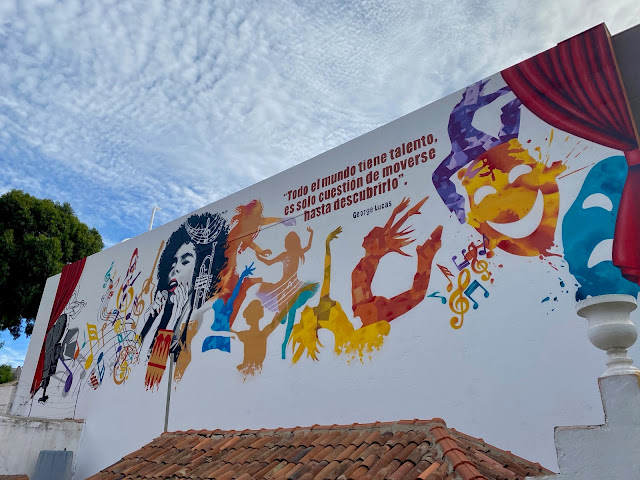
Puerto Mogan
We continued on to Puerto Mogan, which was definitely more of a tourist destination. Most visitors to Gran Canaria stay somewhere along the south coast, so there were clearly a lot of restaurants and shops geared towards them. After parking, we wandered around the port area, which looked almost like it was built for Instagram!
Rows of white and blue houses, and the streets between them absolutely brimming with flowers of all colours, growing up the buildings and overhead like archways. On the waterfront itself, there were little canals between houses, spanned by arched bridges. Palm trees lined most of the front gardens, while yachts and other boats bobbed around in the water next to them. My friend suggested that it was perhaps just a little too perfect, to the point of artifice. But it was certainly pretty, and nice to see the area so well maintained.
We headed along to the beach area, which is around a small inlet, banked in by stone harbour walls. The sea here is very calm, almost like a little lagoon. Restaurants lined the promenade, though as it was before 11am on a Sunday, none were actually open yet, not that we were looking for one. There were lots of deckchairs available at the near end of the beach. Instead, we walked all the way around to the far end, to just lay our towels in the sand, hoping this would be a quieter spot. It was for a while, but people soon arrived to fill up the beach all around. We went for a swim, enjoying the tranquility of the water. It was nice being able to swim or just float, without being buffeted by waves, like we were up north in Sardina!
After a couple of hours lounging in the sun, we went back up to the promenade for an ice cream from Gelatomania. They had so many flavours to choose from! We walked back through town to the car and then continued driving east on the motorway along the southern coast of the island.
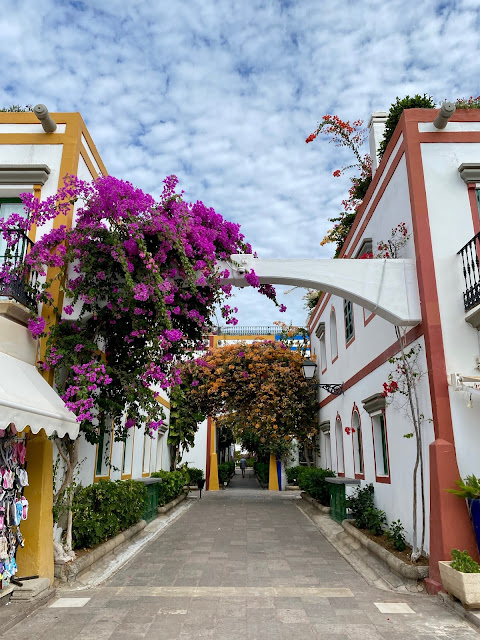
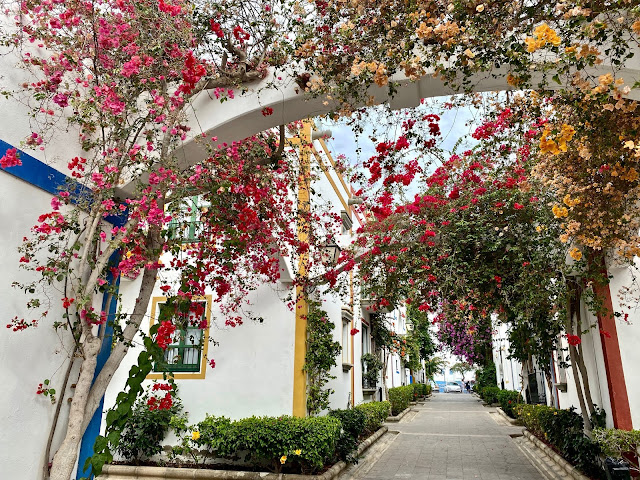

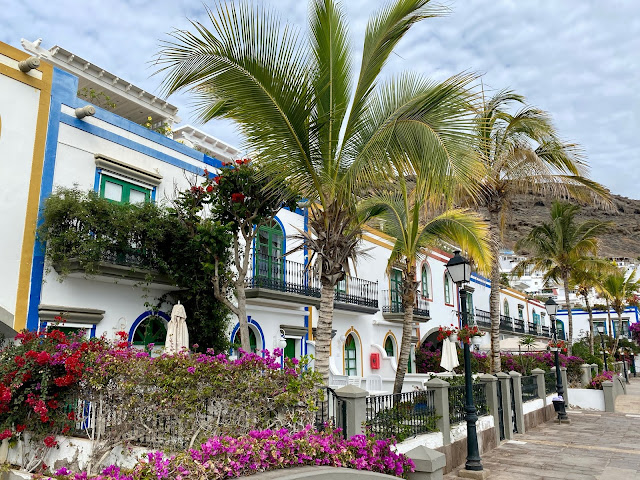
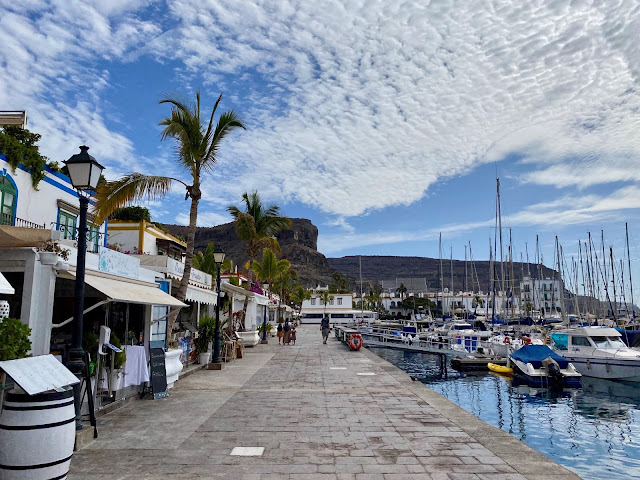

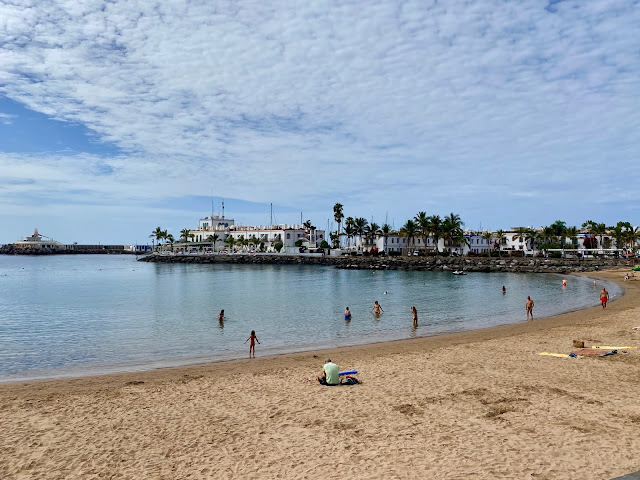
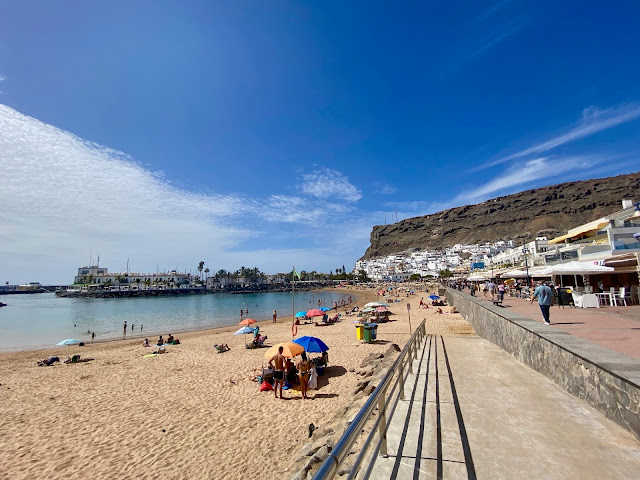
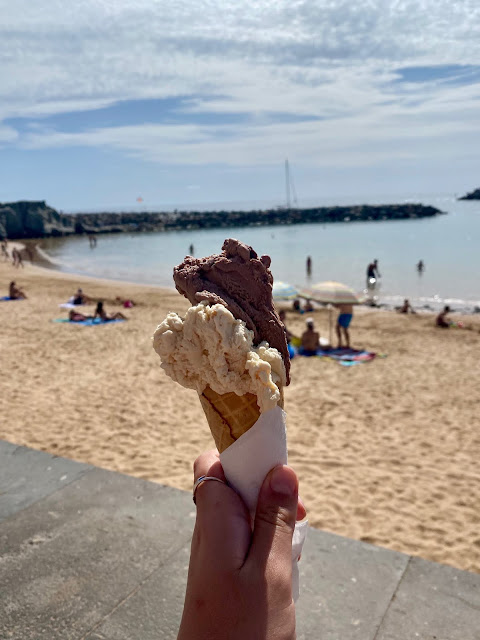
Maspalomas
Our last stop was Maspalomas, a larger city, and a popular tourist destination. We were expecting it to therefore be pretty commercialised, which is why we hadn’t planned to spend a huge amount of time here. It was, though not as much as we were anticipating, so that was a pleasant surprise. The main reason I had wanted to come here was to see the sand dunes. They were naturally formed and are maintained inside a reserve. It’s further around the coast than the main beach, so the area hasn’t been built up and commercialised in the same way. My first impression when we arrived was that they were much bigger than I had been expecting! I thought they’d be well-formed but small, since they’re next to a city on an island. But they were actually large, desert-like hills, and the people walking through them were tiny in comparison!
We found the entrance to the reserve, after following a path along the edge, and initially starting following one of the marked pathways. Then we realised it was going to take us through the dunes towards the ocean, and would take half an hour, which we didn’t have time for. Instead, we wandered around the entrance area for a bit, climbing one of the dunes and taking some photos. Our plan was to head around the coast towards the main beach and we had seen people walking over the dunes in that direction. However, we weren’t really sure that we were meant to, and it’s hard work walking on sand anyways, especially such large ones! So instead we walked along the path outside the reserve, where we could still admire the view along the way.
The path actually stayed higher up above the sand, so as the dunes dropped away, we were way up above the beach itself. We descended some stairs in the cliff to reach a huge car park behind the beach, with various shops and restaurants all around its circumference. The side closest to the sand actually has a little walkway area between the facilities, so we wandered through it to choose somewhere for lunch. It perhaps wasn’t the prettiest spot, and definitely felt very touristic, but we didn’t feel like walking even further away from the car! We enjoyed some lunch, and stuck around for a little while longer to have another drink and people-watch a little. Then we retraced our steps back up the stairs and around the coast to reach the car again.

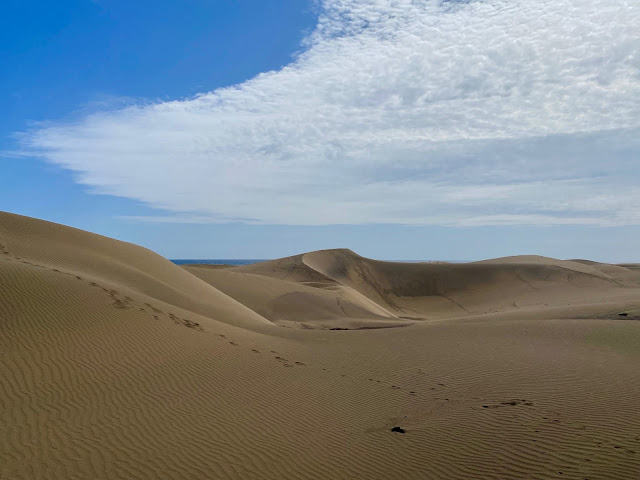
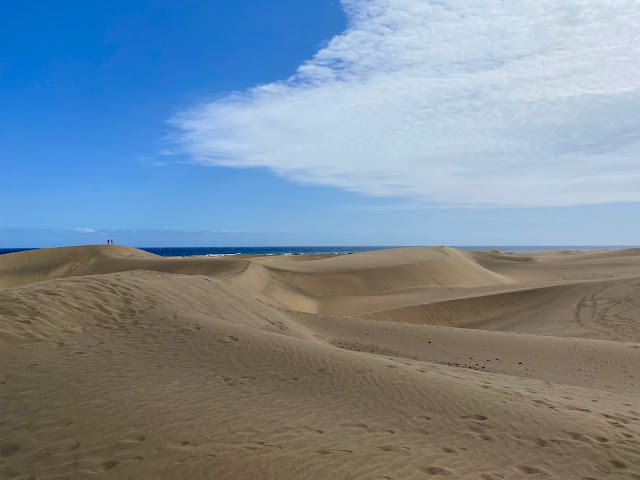
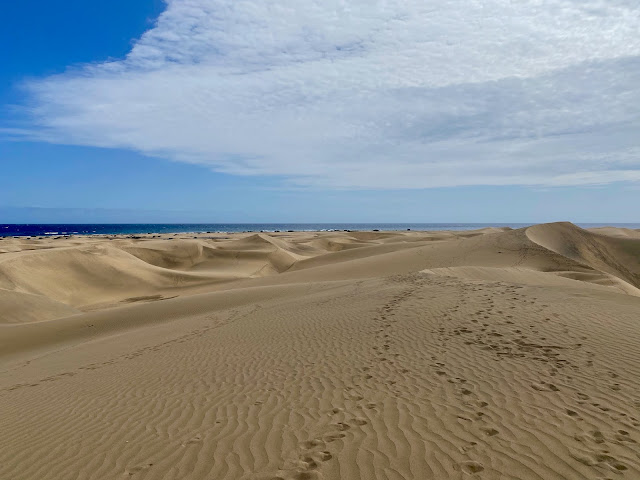
From there, we continued following the motorway around the coast, to reach the airport, where we had to return the car. I had an evening flight to catch on to my next destination, while my friend caught a bus back to Las Palmas. We definitely crammed a lot of activities and locations into five days, and I feel like I’ve seen all the highlights of Gran Canaria! Renting the car was a great idea for exploring beyond Las Palmas, as I didn’t feel like I needed more than a couple of days there. I’m very grateful to my friend for being the driver on those twisting mountain roads! The island certainly has plenty of diversity, from the mountain hiking to the beachfront towns around the coast.
Check out the next instalment from Spain, featuring the city of València!
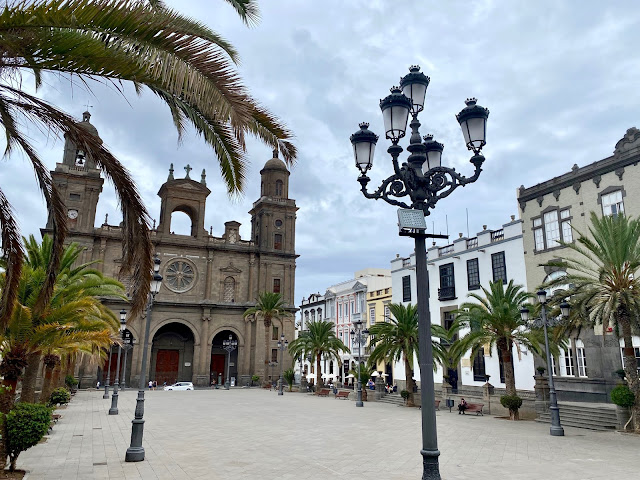
Las Palmas, Gran Canaria | Spain
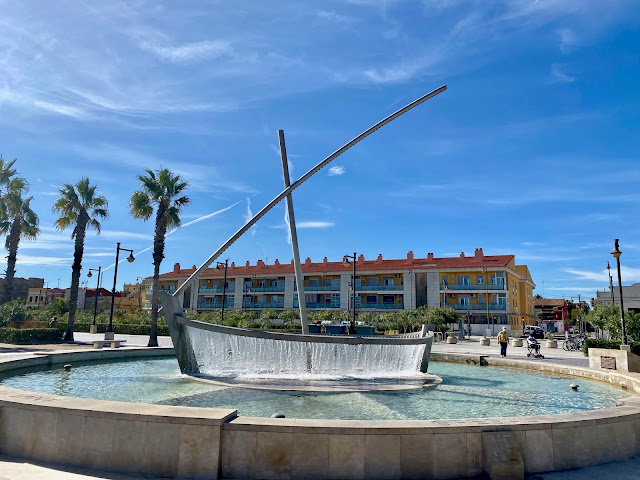
València | Spain
You May Also Like
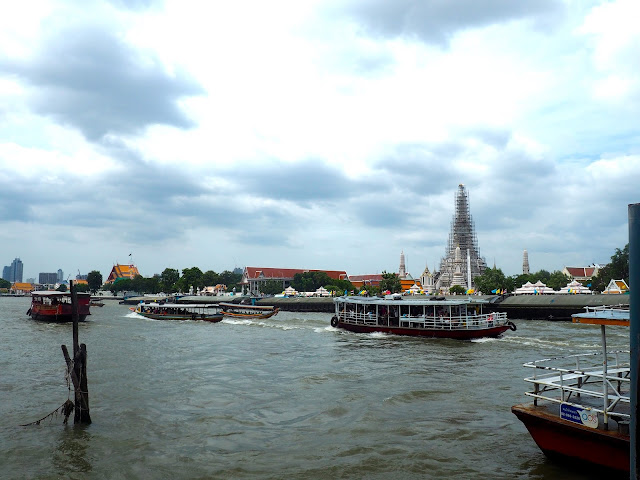
Bangkok | Thai Traveller
14 August 2016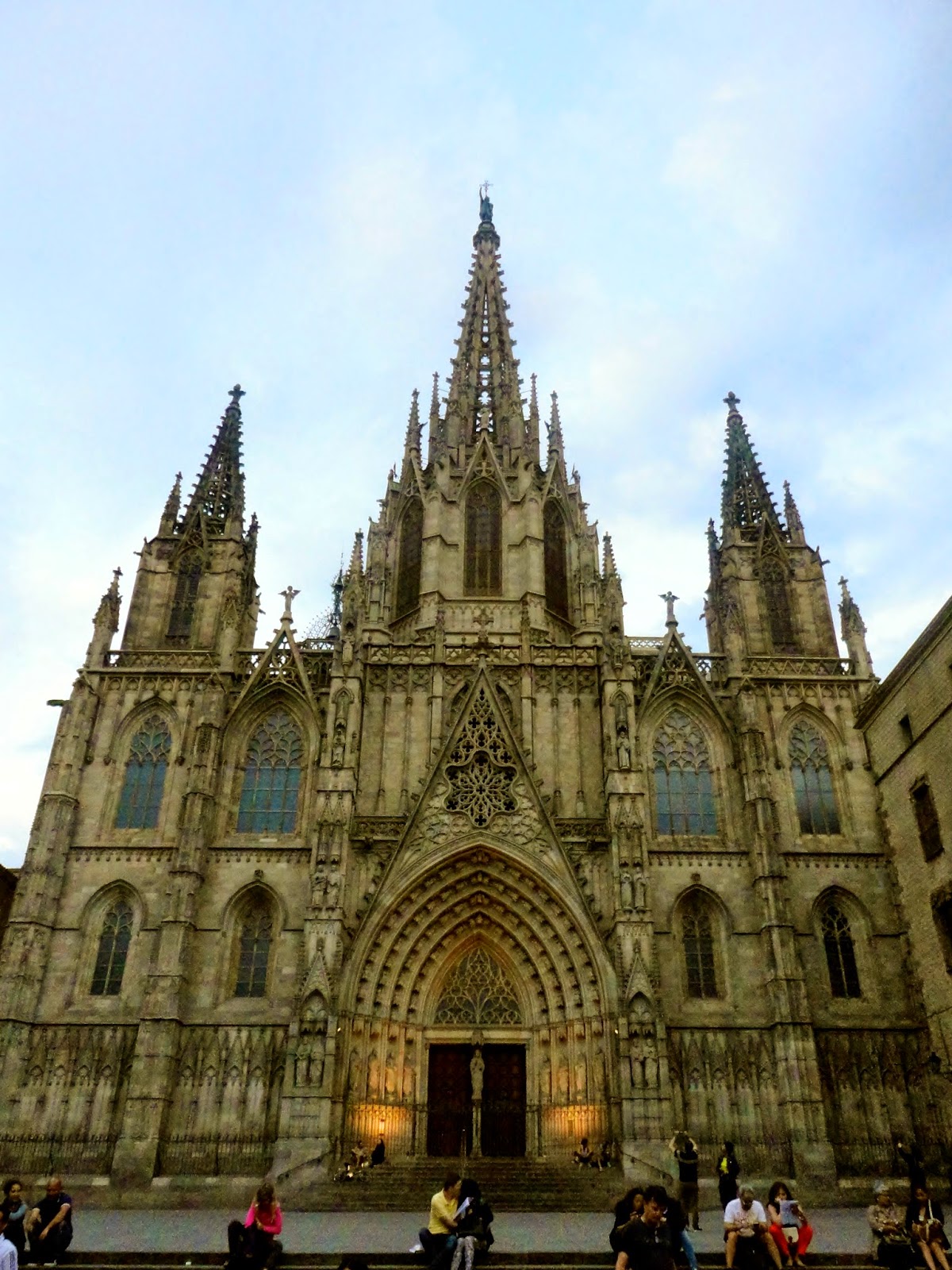
Travel Inspiration: Barcelona
21 February 2015